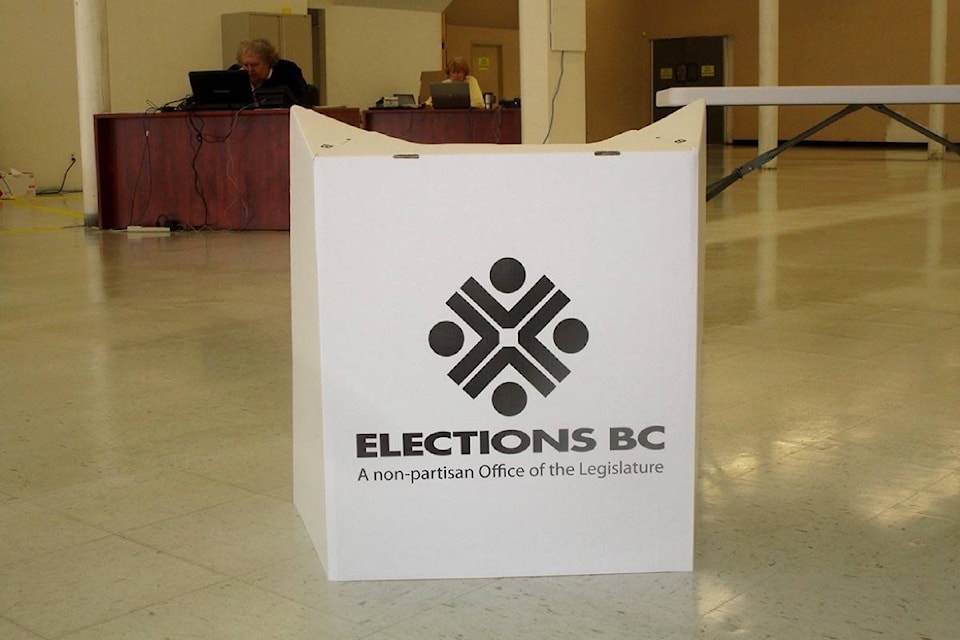How informed are you in choosing a voting system for B.C.?
With the referendum on electoral reform coming up this fall, the province is giving the public one more month to help shape the question that will determine how B.C. votes after July 2021.
Anyone taking part in the online questionnaire should first review the building blocks of voting systems, and five possible scenarios that might one day form provincial democracy.
To date, 11,000 people have completed the digital survey, which begins by asking, “If you were to vote in a referendum to chose a voting system today, how confident are you that your would make an informed choice?”
As part of Jan. 29 online reminder, the government added a suite of materials to the engagement website including educational slideshows, and has sent a mail-out to all B.C. homes encouraging British Columbians to visit the site and complete the opinion poll.
As the questionnaire progresses from asking simple questions such as voting barriers to the more complex, like ranking candidates or political parties on ballots and referendum options, respondents will likely want to refer back to the educational links - voting system options are not easy to comprehend.
The website outlines First Past the Post or Single Member Plurality, the current voting system in B.C. whereby the candidate who gets the most votes in an electoral district (even if it is not the majority of the votes) wins and represents that district in the legislature as its Member of Legislature (MLA).
Then there’s the voting system called List Proportional Representation or “List PR.” This entails multiple MLAs being elected in large electoral districts (regional or province-wide) and the proportion of total votes received by each political party determines the share of seats it receives in the Legislative Assembly.
Mixed Member Proportional or “MMP”, is a system in which voters have one vote for their electoral district representative, and a separate vote for their preferred political party. A party’s overall share of seats in the Legislative Assembly is determined by its share of the vote for political parties.
The Single Transferable Vote refers to multiple MLAs being elected in each electoral district and voters rank the candidates according to their preferences (1, 2, 3, etc.). Candidates must reach a vote threshold to be elected, and their votes may be transferred to their subsequent preferences (2nd, 3rd, etc.) in order to elect the candidates in that district.
Finally, there’s Mixed Member Majoritarian, which is very similar to MMP. Voters have one vote for their electoral district representative, and a separate vote for the preferred political party. In Mixed Member Majoritarian, unlike MMP, the seats allocated for the political party do not compensate for the results of the electoral district vote – instead, those party seats are allocated proportionally only amongst themselves.
Got it?
Since launching “How We Vote” engagement back in November, more than 31,000 British Columbians have visited the link on the government’s website, engage.gov.bc.ca. to read about such topics as how the 2018 referendum ballot should be designed, the question or questions it should contain and their preferred voting system.
“This is another step government is taking to give people the power to shape our democracy,” states Attorney General David Eby.
“I encourage everyone to make their voices heard in this engagement, and to help shape a referendum that will determine how B.C. elects its members of the legislative assembly, and how they represent you.”
Translated versions of the questionnaire and central website content will be available in the coming days in French, Chinese Simplified, Chinese Traditional and Punjabi.
The public engagement closes Feb. 28 after which results will inform a report prepared by the Attorney General, which will be posted publicly before being presented to cabinet.
Details will then be announced, including the referendum date, campaign period, campaign rules and ballot question(s).
The province introduced the Electoral Reform Referendum Act last fall, to establish the referendum, which will be held no later than Nov. 30, 2018.
The referendum will be conducted through a mail-in ballot, with results binding at 50%+1 of the vote province wide.
If a new voting system is approved, legislation will be introduced in time for any provincial election held after July 1, 2021.
The Attorney General will serve as a neutral arbiter throughout the process to ensure the referendum is conducted fairly and in accordance with B.C. law, and will recuse himself from all cabinet and caucus debate and decisions regarding the referendum.
